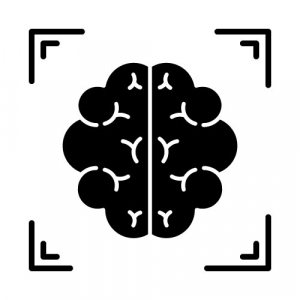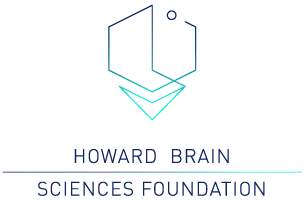While self-reported pain scales are low cost and non-invasive, they lack the reproducibility and objectivity of neuroimaging. Objective measures of pain are useful for both clinicians and patients as “chronic pain patients are defined as ‘difficult patients’”(Borsook, Moulton, Schmidt, Becerra, 2007). Pain is difficult to consistently communicate due to neuropsychological factors, and objective measures present healthcare providers with clear internally consistent data. Additional complications to diagnosing and treating chronic pain include secondary changes to the central nervous system caused by chronic pain, as well as the limits of analgesic treatments (Borsook et al., 2007).  Analgesics “rarely [exceed] a 30% efficacy level in controlled trials,” and long term opioid use leads to both hyperalgesia (pain sensitivity), analgesic resistance (reduced analgesic efficacy), and addiction (Borsook et al., 2007). By utilizing a combination of anatomical, functional, and chemical imaging experts have determined chronic pain leads to functional, neurochemical, and structural changes in the brain (Borsook et al., 2007).
Analgesics “rarely [exceed] a 30% efficacy level in controlled trials,” and long term opioid use leads to both hyperalgesia (pain sensitivity), analgesic resistance (reduced analgesic efficacy), and addiction (Borsook et al., 2007). By utilizing a combination of anatomical, functional, and chemical imaging experts have determined chronic pain leads to functional, neurochemical, and structural changes in the brain (Borsook et al., 2007).
Additional studies in neuroimaging have found detectable pain signatures in the brain (Sarnthein, Stern, Aufenberg, Rousson, & Jeanmonod 2006). These signatures can be used in conjunction with functional scans to “define some objective outcomes such as continued central sensitization, responses to specific analgesia (e.g., drug infusion), responses to experimental pain (e.g., thermal or mechanical), or disease process” (Borsook et al. 2007). The pain process begins in the primary somatosensory cortex, anterior cingulate cortex, and posterior insula (Borsook et al., 2007). Recognition and immediate behaviors are then processed by the anterior cingulate cortex, inferior parietal lobe, premotor cortex, and posterior insula (Borsook et al. 2007). Lastly, evaluation and sustained behaviors are processed by the orbitofrontal cortex, hippocampus, entorhinal cortex, and anterior cingulate cortex (Borsook et al. 2007). By monitoring these regions, providers can learn about the efficacy and effects of various treatments.
Traditionally prescribed medications are antidepressants, antiepileptics, and opioids (Borsook et al., 2007; Attal et al., 2006). Serotonin and norepinephrine reuptake inhibitors, a form of antidepressants, are most effective at treating polyneuropathy (PPN), disease or degeneration affecting the peripheral nerves (Attal et al., 2006). Gabapentin, an antiepileptic, is primarily effective for treating postherpetic neuralgia (PHN), a shingles complication, and PPN (Attal et al., 2006). Opioids are also effective at treating PPN and PHN and are prescribed for both early and prolonged pain relief (Attal et al., 2006; Borsook et al., 2007) Though effective, these medications were not “developed for treating pain using a rational mechanistic approach” (Borsook et al., 2007). Experts instead recommend the ideal pharmaceutical approach that would “[provide early and prolonged pain relief, have peripheral and central effects, have neuroprotective effects, enhance analgesic systems through receptor-mediated or other mechanisms, and modulate cytokine/immune responses]” as well as target sensory circuits, emotional circuits, and neural degeneration (Borsook et al., 2007). Practically, it may be difficult to determine or engineer one drug that has all these properties. Borsook et al. (2007) suggest combining multiple drugs to combat tachyphylaxis and respond to other alterations to the nervous system.
Borsook et al. (2007) also propose, neuroimaging would also “help measure changes in patients,” especially if physiological changes preempt clinical ones such as “the onset of neuropathic pain following an injury.” They recommend functional scans, such as magnetic resonance imaging, for defining objective outcomes such as responses to analgesia or experimental pain, or disease process (Borsook et al., 2007). Anatomical scans, such as computed tomography, could relay information such as anisotropy, the directionality of molecules in various parts of the brain, and cortical thickness (Alba-Ferrara & Erausquin, 2013; Borsook et al., 2007). Chronic pain is associated with structural changes in corticolimbic structures, the prefrontal cortex, the amygdala, the anterior cingulate cortex, the hippocampus, the nucleus accumbens, as well as periaqueductal gray matter (Yang & Chang, 2019). Examining these structures for change may indicate patient progress (Yang & Chang, 2019; Borsook et al. 2007). Lastly, chemical scans, such as positron emission tomography, could “define a number of neurotransmitters,” giving healthcare providers more insight into how treatments affect brain function (Borsook et al., 2007).
Overall, Borsook et al. (2007) claim that insights from neuroimaging “will almost certainly mould some of our thinking in defining new approaches to discovering analgesics for chronic pain.” As the global cost of pain continues to rise, advances in treatment can improve patient and caregiver quality of life (Phillips, 2009). If you or a loved one are suffering from chronic pain, the International Association for the Study of Pain lists organizations worldwide committed to pain relief, or you can reach out to our Patient Advocacy program at patientadvocacy@brainsciences.org.
Written by Senia Hardwick
References
Alba-Ferrara, L. M., & de Erausquin, G. A. (2013). What does anisotropy measure? Insights from increased and decreased anisotropy in selective fiber tracts in schizophrenia. Frontiers in Integrative Neuroscience, 7. https://doi.org/10.3389/fnint.2013.00009
Attal, N., Cruccu, G., Haanpää, M., Hansson, P., Jensen, T. S., Nurmikko, T., Sampaio, C., Sindrup, S., & Wiffen, P. (2006). EFNS guidelines on pharmacological treatment of neuropathic pain. European Journal of Neurology, 13(11), 1153–1169. https://doi.org/10.1111/j.1468-1331.2006.01511.x
Borsook, D., Moulton, E. A., Schmidt, K. F., & Becerra, L. R. (2007). Neuroimaging revolutionizes therapeutic approaches to chronic pain. Molecular Pain, 3, 1744-8069-3–25. https://doi.org/10.1186/1744-8069-3-25
Phillips, C. J. (2009). The cost and burden of chronic pain. Reviews in Pain, 3(1), 2–5. https://doi.org/10.1177/204946370900300102
Sarnthein, J., Stern, J., Aufenberg, C., Rousson, V., & Jeanmonod, D. (2006). Increased EEG power and slowed dominant frequency in patients with neurogenic pain. Brain, 129(1), 55–64. https://doi.org/10.1093/brain/awh631
Yang, S., & Chang, M. C. (2019). Chronic pain: Structural and functional changes in brain structures and associated negative affective states. International Journal of Molecular Sciences, 20(13). https://doi.org/10.3390/ijms20133130
